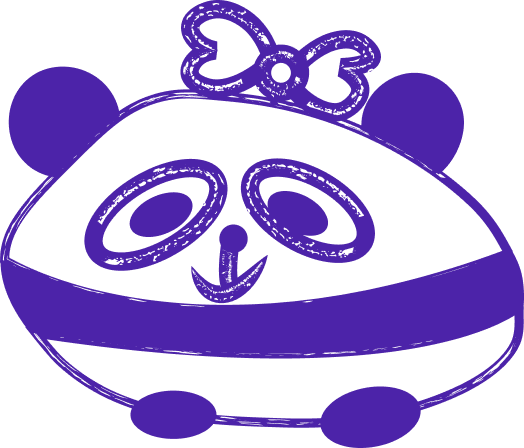
input output control
What is Input/Output Control
Input/Output Control, also known as I/O Control, is a crucial aspect of computer systems that manages the flow of information between the central processing unit (CPU) and various external devices. It is a fundamental mechanism that enables the exchange of data and instructions between the computer and its peripheral devices, such as keyboards, mice, printers, scanners, and storage devices.
In simple terms, Input/Output Control serves as the intermediary bridge that facilitates communication and coordination between the computer's internal components and the external world. It ensures that data is efficiently transferred to and from the CPU, allowing users to interact with the system and enabling the computer to perform tasks effectively.
The primary objective of Input/Output Control is to provide an organized and controlled environment for data transfer, ensuring that the CPU and peripheral devices can effectively exchange information. It involves managing the input and output operations, including data transfer, error handling, and synchronization, to ensure the reliable and timely transmission of data.
Input/Output Control operates through a combination of hardware and software components. The hardware component includes the physical connectors, cables, and controllers that facilitate the transmission of data between the computer and external devices. On the other hand, the software component involves the implementation of protocols, drivers, and operating system routines that govern the interaction between the CPU and peripherals.
One of the key aspects of Input/Output Control is the concept of input and output devices. Input devices are responsible for feeding data and instructions into the computer system, while output devices display or produce the results of the computer's processing. Input devices commonly include keyboards, mice, touchscreens, and scanners, whereas output devices encompass monitors, printers, speakers, and storage devices.
The Input/Output Control mechanism employs various techniques to optimize data transfer and ensure efficient system performance. These techniques include buffering, caching, interrupt-driven I/O, and direct memory access (DMA). Buffering involves temporarily storing data in a buffer before it is transferred to or from the CPU, reducing the impact of timing differences between devices. Caching helps improve performance by storing frequently accessed data closer to the CPU, reducing the need for repeated data retrieval from external devices. Interrupt-driven I/O allows the CPU to handle multiple tasks simultaneously by interrupting the ongoing processing when an I/O operation is required. DMA enables direct data transfer between memory and peripheral devices, bypassing the CPU and reducing its involvement in the data transfer process.
Overall, Input/Output Control plays a vital role in ensuring the smooth functioning of computer systems by managing the flow of information between the CPU and external devices. It provides an interface that allows users to interact with the system and enables the computer to process data and produce meaningful output. Without effective Input/Output Control, computers would be unable to communicate with the outside world, rendering them useless. Therefore, understanding and implementing efficient Input/Output Control mechanisms are essential for developing robust and high-performing computer systems.
In simple terms, Input/Output Control serves as the intermediary bridge that facilitates communication and coordination between the computer's internal components and the external world. It ensures that data is efficiently transferred to and from the CPU, allowing users to interact with the system and enabling the computer to perform tasks effectively.
The primary objective of Input/Output Control is to provide an organized and controlled environment for data transfer, ensuring that the CPU and peripheral devices can effectively exchange information. It involves managing the input and output operations, including data transfer, error handling, and synchronization, to ensure the reliable and timely transmission of data.
Input/Output Control operates through a combination of hardware and software components. The hardware component includes the physical connectors, cables, and controllers that facilitate the transmission of data between the computer and external devices. On the other hand, the software component involves the implementation of protocols, drivers, and operating system routines that govern the interaction between the CPU and peripherals.
One of the key aspects of Input/Output Control is the concept of input and output devices. Input devices are responsible for feeding data and instructions into the computer system, while output devices display or produce the results of the computer's processing. Input devices commonly include keyboards, mice, touchscreens, and scanners, whereas output devices encompass monitors, printers, speakers, and storage devices.
The Input/Output Control mechanism employs various techniques to optimize data transfer and ensure efficient system performance. These techniques include buffering, caching, interrupt-driven I/O, and direct memory access (DMA). Buffering involves temporarily storing data in a buffer before it is transferred to or from the CPU, reducing the impact of timing differences between devices. Caching helps improve performance by storing frequently accessed data closer to the CPU, reducing the need for repeated data retrieval from external devices. Interrupt-driven I/O allows the CPU to handle multiple tasks simultaneously by interrupting the ongoing processing when an I/O operation is required. DMA enables direct data transfer between memory and peripheral devices, bypassing the CPU and reducing its involvement in the data transfer process.
Overall, Input/Output Control plays a vital role in ensuring the smooth functioning of computer systems by managing the flow of information between the CPU and external devices. It provides an interface that allows users to interact with the system and enables the computer to process data and produce meaningful output. Without effective Input/Output Control, computers would be unable to communicate with the outside world, rendering them useless. Therefore, understanding and implementing efficient Input/Output Control mechanisms are essential for developing robust and high-performing computer systems.

